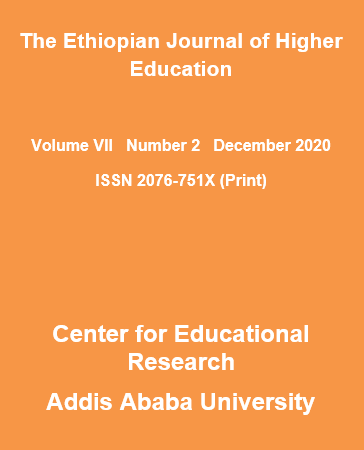University-Industry Linkages in Ethiopia: A Comprehensive Review and Analysis of Current Trends, Challenges, and Future Prospects
DOI:
https://doi.org/10.63990/ejhe.v7i2.12050Abstract
This study employs a comprehensive literature review and qualitative content analysis to identify and synthesize the current trends, challenges, and prospects of university-industry linkages (UIL) in Ethiopia. Currently, UIL has become a critical concern for nations and an integral economic component of many countries worldwide. UIL fosters innovation, drives economic growth, and bridges the gap between academic knowledge and industrial applications. It enables the commercialization of knowledge (research) and enhances industry productivity. Despite efforts to promote UIL in Ethiopia, the progress has been sluggish, accompanied by several challenges. While there is literature on UIL in Ethiopia, a significant problem persists in accessing and acquiring in-depth research or literature that adopts a comprehensive approach to the subject. This review aims to examine the status of UIL in Ethiopia. Through an analysis of 15 articles and 6 legal documents, the study identifies areas of collaboration, challenges faced, and legal frameworks that shaped UIL. The paper thoroughly analyzed research articles and legal documents to gain insights into the current landscape of UIL in Ethiopia. The result shows that the status of UIL in Ethiopia is in a nascent stage. Student internships, consultancies, and training initiatives are common forms of collaboration. Challenges identified encompass infrastructural limitations, knowledge gaps, weak institutional commitment, and awareness deficits. From the industry side, limited investment in research and development (R&D), lack of structured collaboration frameworks, and a perception of UIL as costly and impractical further hinder collaboration. From the government side, insufficient funding and weak enforcement of legal frameworks have contributed to the slow progress of UIL. The government's role in fostering a more robust UIL ecosystem remains weak. Legal documents, including UIL directives and policies, highlight efforts for alignment of technological development with national goals, emphasizing the multifaceted approach towards UIL. Despite facing challenges, there is optimism about the potential benefits of UIL, including practical industry exposure, financial support, and research opportunities. The findings stress the need for a collaborative and well-defined approach involving academia, industry, and the government to foster a vibrant UIL ecosystem. Based on these findings, recommendations for improving University Industry Collaboration (UIC) include strong legal enforcement mechanisms, increased investment in research and development (R&D), and the creation of more structured engagement instruments among universities, industries, and government. This comprehensive review reveals that the UIL landscape in Ethiopia is characterized by both promise and challenges, and exhibits sluggish progress. This review provides valuable insights for future research.Downloads
Published
2025-07-16
Issue
Section
Articles

